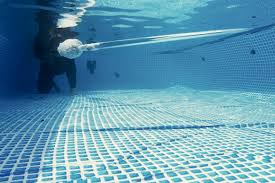
Breaking News
 Mike Benz just examined Epstein files and he's got a telltale theory…
Mike Benz just examined Epstein files and he's got a telltale theory…
 BREAKING GLOBAL EXCLUSIVE: Former High-Level CIA Operative Patrick Byrne Reveals That...
BREAKING GLOBAL EXCLUSIVE: Former High-Level CIA Operative Patrick Byrne Reveals That...
 Junk-food Bans for SNAP Users To Begin in January
Junk-food Bans for SNAP Users To Begin in January
Top Tech News
 EngineAI T800: Born to Disrupt! #EngineAI #robotics #newtechnology #newproduct
EngineAI T800: Born to Disrupt! #EngineAI #robotics #newtechnology #newproduct
 This Silicon Anode Breakthrough Could Mark A Turning Point For EV Batteries [Update]
This Silicon Anode Breakthrough Could Mark A Turning Point For EV Batteries [Update]
 Travel gadget promises to dry and iron your clothes – totally hands-free
Travel gadget promises to dry and iron your clothes – totally hands-free
 Perfect Aircrete, Kitchen Ingredients.
Perfect Aircrete, Kitchen Ingredients.
 Futuristic pixel-raising display lets you feel what's onscreen
Futuristic pixel-raising display lets you feel what's onscreen
 Cutting-Edge Facility Generates Pure Water and Hydrogen Fuel from Seawater for Mere Pennies
Cutting-Edge Facility Generates Pure Water and Hydrogen Fuel from Seawater for Mere Pennies
 This tiny dev board is packed with features for ambitious makers
This tiny dev board is packed with features for ambitious makers
 Scientists Discover Gel to Regrow Tooth Enamel
Scientists Discover Gel to Regrow Tooth Enamel
 Vitamin C and Dandelion Root Killing Cancer Cells -- as Former CDC Director Calls for COVID-19...
Vitamin C and Dandelion Root Killing Cancer Cells -- as Former CDC Director Calls for COVID-19...
 Galactic Brain: US firm plans space-based data centers, power grid to challenge China
Galactic Brain: US firm plans space-based data centers, power grid to challenge China
DSG's supercavitating underwater bullets annihilate ballistics tests

But Norway's DSG has used the drag-reducing abilities of supercavitation to produce some truly extraordinary projectiles that'll hit submerged targets up to 60 m (200 ft) away, opening up some interesting new mission capabilities.
Supercavitation refers to designs that wrap an underwater projectile in a bubble of air to vastly reduce skin friction drag. It's been used on torpedoes, allowing them to move some five times faster through the water than regular ones, as well as on propellers and some pretty wild boat designs, and it's being investigated as a potential way to produce ultra-fast submarines.
The supercavitation effect can be produced, rather counter-intuitively perhaps, by giving the projectile a flat, disc-shaped nose with a sharp edge lip. This pushes water out of the way hard enough to leave an air bubble just big enough for the projectile to move through without its sides or back dragging against the water. In the case of torpedoes, boats and submarines, the effect can be enhanced by routing exhaust gases through to the tip so they can add to the air bubble.
DSG says it's had to turn to the aerospace industry to find manufacturers that can work to the tolerances required for its CAV-X supercavitating bullet designs, which appear to use rounded tips that lead back to flat, sharp ridge discs at the point, as well as other ridges positioned further back on the bullet body.

 The Ever-Widening War
The Ever-Widening War

